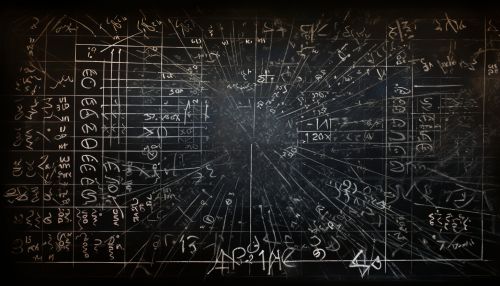Mathematics of Cryptography in Cybersecurity
Introduction
Cryptography is a fundamental aspect of cybersecurity, providing the means to secure information and communication in the digital world. The mathematics of cryptography involves the application of mathematical concepts and methods to design and analyze cryptographic systems. This article delves into the mathematical foundations of cryptography and their application in cybersecurity.


Mathematical Foundations of Cryptography
Cryptography is deeply rooted in mathematics, with various branches such as number theory, algebra, and probability theory playing crucial roles.
Number Theory
Number theory is a branch of pure mathematics devoted to the study of the integers. It has been instrumental in the development of many cryptographic algorithms. For instance, the RSA algorithm, one of the first public-key cryptosystems, is based on the difficulty of factoring large composite numbers, a problem in number theory.
Algebra
Algebra, particularly abstract algebra, is another fundamental area in cryptography. Concepts such as groups, rings, and fields form the basis of many cryptographic systems. For example, the Diffie-Hellman key exchange and the Elliptic Curve Cryptography (ECC) rely on the properties of algebraic structures.
Probability Theory
Probability theory, the branch of mathematics concerned with probability, is essential in the analysis of cryptographic systems. It is used to evaluate the security of cryptographic algorithms and to estimate the probability of successful attacks.


Cryptography in Cybersecurity
Cryptography is a cornerstone of cybersecurity, providing the tools to protect data integrity, confidentiality, and authenticity. It enables secure communication over insecure channels, protects sensitive data from unauthorized access, and ensures the identity of communicating parties.
Symmetric Cryptography
Symmetric cryptography, also known as secret-key cryptography, involves the use of the same key for both encryption and decryption. Algorithms such as the Data Encryption Standard (DES) and the Advanced Encryption Standard (AES) fall under this category. These algorithms are based on mathematical operations that provide a high level of security when used with a sufficiently long key.
Asymmetric Cryptography
Asymmetric cryptography, or public-key cryptography, involves the use of two mathematically related keys: a public key for encryption and a private key for decryption. This approach solves the key distribution problem inherent in symmetric cryptography. RSA and ECC are examples of asymmetric cryptographic systems.
Hash Functions
Hash functions are another essential tool in cybersecurity. They produce a fixed-size output (hash) from any input data, and it is computationally infeasible to generate the original input from its hash. Hash functions are used in various applications, including data integrity checks and digital signatures.


Challenges and Future Directions
Despite the significant advances in cryptography, challenges persist. The advent of quantum computing threatens the security of many existing cryptographic systems. Quantum computers can potentially solve problems like integer factorization and discrete logarithm, which are hard for classical computers, thus breaking RSA and ECC.
As a result, there is a growing interest in post-quantum cryptography, which aims to develop cryptographic systems that can withstand quantum attacks. This field is heavily reliant on new mathematical problems, such as those from coding theory and lattice theory.


